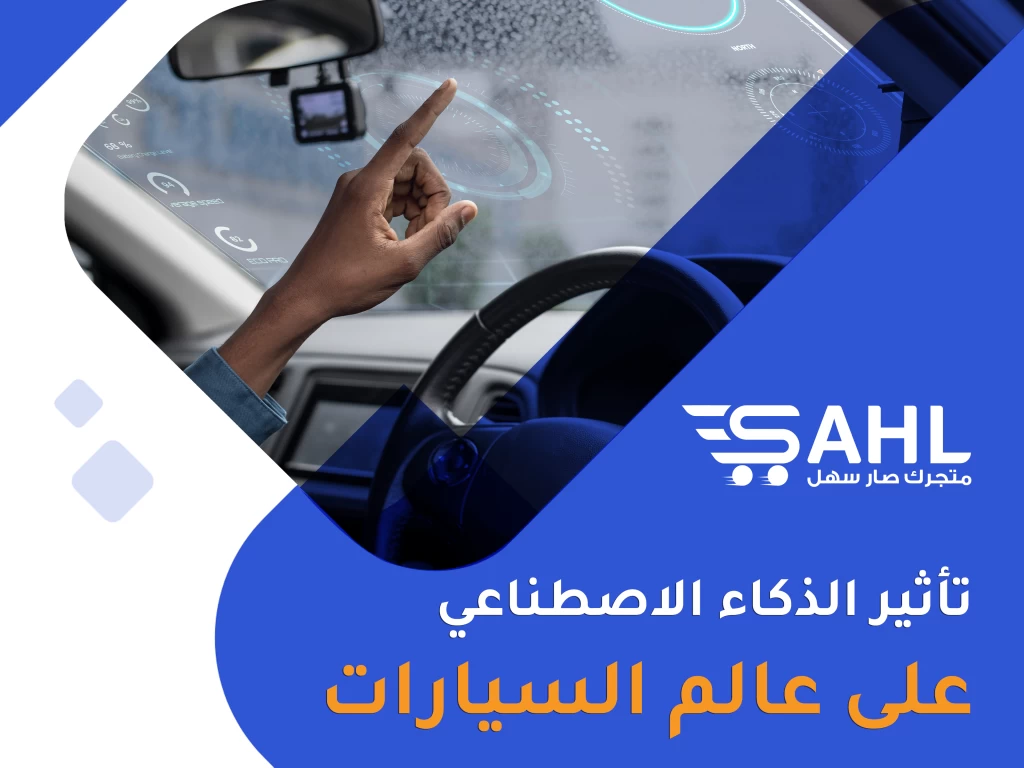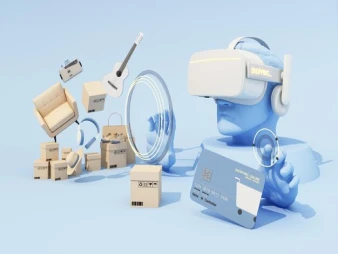Free support 24/7
Free support 24/7

The automotive industry is witnessing rapid development and a remarkable technological revolution thanks to the advancement of technology and artificial intelligence techniques. One of the most notable developments brought about by this technology is its positive impact on the field of car driving. In this article, we will explore how artificial intelligence can improve the driving experience and increase road safety.
Driver assistance systems: Advanced technology and artificial intelligence provide driver assistance systems that improve their decisions and increase their safety on the roads. For example, an intelligent driver assistance system can sense potential hazards and warn the driver of a potential collision or lane departure, reducing road accidents.
Autonomous driving: Artificial intelligence contributes significantly to the development of technologies used in autonomous cars. These cars rely on sensor systems and artificial intelligence to make decisions and interact with the surrounding environment. This can increase time efficiency and reduce road congestion and traffic accidents.
Parking and parking assistance systems: Artificial intelligence can also help drivers park and park easily. Technologies such as cameras and sensors work in concert with artificial intelligence software to precisely guide the car into the appropriate position.
Improved fuel and environmental efficiency: Artificial intelligence can be used to improve fuel efficiency and reduce harmful gas emissions. Intelligent software can precisely monitor and adjust engine performance to maintain maximum efficiency and better environmental performance.
Communication with other cars and road structure: Advanced technologies and artificial intelligence allow cars to interact with road structure and other cars over the Internet. Smart cars can exchange information about traffic, weather conditions and more, improving traffic flow and reducing road congestion.
Pedestrian Safety: Innovative technologies contribute to greater pedestrian safety as well. Sensors and cameras can identify pedestrians and other vehicles in surrounding areas and warn drivers of their presence, reducing hit-and-run accidents.
Personalize the driving experience: Artificial intelligence can personalize the driving experience to meet the driver's needs. For example, the driver can easily adjust the car's interface, audio settings and lighting using voice commands, which increases comfort and enjoyment while driving.
Maintaining personal safety: Artificial intelligence technologies enable the car to monitor the driver’s condition, detect signs of fatigue, and respond appropriately. If fatigue or loss of attention is detected, the system can provide warnings or even intervene to help keep the driver safe.
Maintenance and breakdown prediction: Using AI, cars can provide periodic reports on maintenance status and suggest appropriate maintenance based on sensor readings and performance data. This can help avoid unexpected breakdowns and improve vehicle performance.
Machine learning and continuous improvement: Artificial intelligence allows cars to learn from driving experiences and improve their performance over time. This continuous improvement allows cars to deliver a better and more precise driving experience over time.
Driving through adverse weather conditions: Artificial intelligence can improve vehicle performance in adverse weather conditions such as heavy rain or snow. Advanced systems can recognize changes in conditions and adapt driving and performance appropriately.
Main driving experience: Artificial intelligence allows drivers to experience driving in different styles, such as sporty or economical driving. The driver can change the driving modes to achieve different performance according to his needs.
Interaction with the smart environment: Cars equipped with artificial intelligence can interact with other smart environments, such as connected traffic lights and smart lighting systems. This can reduce waiting time at signals and improve traffic flow.
Cybersecurity: As cars become more connected to the Internet, cybersecurity is more important than ever. Artificial intelligence relies on technology to protect cars and their systems from hacking and cyber attacks, keeping driving safe.
Optimize long trips: AI can improve long driving trips by providing drivers with advice about stops, fuel, and road conditions. This contributes to making trips smoother and more comfortable.
Economic and environmental: Artificial intelligence also helps improve fuel consumption and thus reduce the cost of operating cars and their environmental impact.
Smart insurance: Artificial intelligence can provide accurate information about drivers' individual driving style, enabling insurance companies to provide better services and less expensive insurance rates.
Innovation, research and development: Artificial intelligence technologies contribute to pushing the automotive industry towards greater innovation, research and development, opening the door to the development of more advanced and intelligent cars in the future.
Achieving road security: Artificial intelligence also contributes to achieving road security and reducing fatal traffic accidents. Through sensing systems and continuous analysis of traffic data, relevant authorities can be directed to take quick action in emergency situations and improve traffic direction to avoid congestion.
Enhancing public mobility: Technology and artificial intelligence can also be used to improve public transportation systems and make them more efficient and flexible. This includes better bus and train timing and route routing based on actual demand.
Economical driving: Artificial intelligence can improve driving style in a way that increases fuel efficiency and reduces environmental pollution. The system makes recommendations about speed, acceleration and stopping times to achieve the best economy.
Entertainment Experience: AI can also enhance the driving experience by providing fun entertainment and interaction
Inside the car, such as entertainment and gaming systems and interaction with smartphones.
Smart infrastructure: The development of artificial intelligence can encourage the improvement of road and intersection infrastructure. This includes developing smart traffic lights and smart roads that help facilitate traffic.
Predicting congestion and accidents: Data analytics and artificial intelligence can be used to predict possible congestion and accidents on the roads. This allows drivers to avoid crowded roads and plan their trips better.
Communicating with other things: AI can enable cars to communicate with other things in their surrounding environment, such as traffic lights, smart infrastructure, and other vehicles. This can increase the effectiveness of vehicle control and safety
Urban congestion control: Many cities suffer from urban traffic congestion problems. AI can help manage this problem by providing drivers with live data-based guidance to avoid congested roads and choose the most efficient routes.
Traffic accident forecasting: Artificial intelligence can help predict and analyze traffic accident models using historical data and variable factors such as weather conditions and traffic density. This contributes to improving public safety.
Virtual Reality Car Experiences: Artificial intelligence is used in developing virtual reality car experiences to test cars and improve their performance and safety in a virtual environment before they reach real roads.
Contributing to achieving sustainability goals: Artificial intelligence can play a vital role in achieving environmental sustainability goals by improving fuel efficiency and encouraging the use of electric and hybrid vehicles.
Continuous improvement: Improving artificial intelligence systems depends on machine learning and data analysis on an ongoing basis, which means that improvement and development will continue over time, making the impact of artificial intelligence on driving cars more advanced and improved.
Safe and responsible driving: Artificial intelligence can enhance awareness of driving rules and safe behaviors on the roads. Intelligent systems can provide assessments and recommendations to drivers on how to improve driving style and comply with traffic laws.
Support for drivers with special needs: Artificial intelligence can provide additional support for drivers with special needs, such as providing customized interfaces and voice control systems to facilitate the driving process.
Communication between cars and smart infrastructure: Artificial intelligence can enhance communication between cars and smart infrastructure to achieve an integrated system for better traffic management and control.
Deep Learning and Deep Optimization: Artificial Intelligence and deep learning techniques enable continuous improvement of automotive systems, as they can learn from existing data and profoundly improve their performance over time.
Mobility innovation: AI technologies may emerge new forms of mobility, such as flying cars and flying self-driving cars, opening the door to revolutionary transformations in mobility.
Impact of other sectors: The impact of artificial intelligence on driving cars is also reflected in other sectors such as insurance, logistics and retail, making them more integrated and effective.
Collective self-driving cars: Artificial intelligence can contribute to the development of models for collective self-driving cars, where a group of smart cars can communicate and coordinate together to improve traffic flow and reduce road congestion.
Data sharing and collaboration: AI can enable different cars to share data and information with each other securely, helping to enhance cooperation and improve vehicle coordination on the roads.
Social and environmental guidance: AI can provide social and environmental guidance to drivers, such as directing them to alternative fuels or rely on public transportation in certain situations to reduce carbon emissions and improve the environment.
Training and continuing education: Artificial intelligence can provide a safe environment for drivers to train on driving skills and gain experience, which contributes to improving the level of road safety.
New Economy: The advancement of artificial intelligence opens doors to a new economy related to the development, maintenance and improvement of smart systems and smart cars, creating new jobs and stimulating innovation.
Emissions control: Artificial intelligence can help drivers control vehicle emissions and preserve the environment by providing recommendations on economical driving and using less polluting fuel.
Big Data Analysis: AI techniques can be used to analyze big data related to traffic and road safety laws to detect trends and direct government and industry efforts toward improving infrastructure and road safety.
Mitigating major accidents: Thanks to the ability to monitor and analyze driving behavior and predict potential car accidents, artificial intelligence can play an important role in reducing major road accidents and contributing to providing a safer life for society.
Expanding accessibility: AI can help people with disabilities better access mobility by developing technology that makes driving more convenient and accessible for everyone.
Health monitoring and health safety: Artificial intelligence can analyze drivers' health data, such as heart rate and stress level, and give warnings if they provide early signs of health problems, enhancing health safety while driving.
Major congestion control: AI can also be used to improve traffic flow and reduce congestion in large cities, reducing waiting time and fuel consumption.
Reduce wasted time: using analytics
Smart and directing drivers to the most efficient routes, artificial intelligence can reduce time wasted in traffic congestion, contributing to increased productivity and driver comfort.
Forecasting emergency situations: Artificial intelligence can help predict road emergencies such as fires, floods and landslides, allowing jurisdictions to take the necessary measures in a timely manner.
Enhancing the driving experience for participants with self-driving capabilities: Artificial Intelligence can enable a self-driving experience for people with self-driving capabilities, such as professional racetrack drivers or people who love an exciting experience.
Reducing congestion in cities: Artificial intelligence can also play an important role in reducing congestion in cities by directing drivers to alternative routes and coordinating with traffic management systems to improve traffic flow.
Rational guidance of energy consumption: Artificial intelligence can provide recommendations on how to use energy more rationally while driving, contributing to reducing fuel consumption and harmful emissions.
Enhancing safety in difficult driving conditions: In difficult driving conditions such as heavy rain or dense fog, artificial intelligence can provide special advice and guidance to drivers to increase the level of safety on the roads.
Advanced technologies for urban mobility: Smart technologies contribute to improving urban mobility in general, by directing drivers to available parking and storage destinations and improving the customer experience.
Promoting sustainability and environmental preservation: Artificial intelligence can encourage the use of alternative and sustainable means of transportation such as bicycles and public transportation, which reduces car congestion and reduces pollution.
Communication between cars and large vehicles: Artificial intelligence can enhance communication between cars, trucks and large buses, increasing safety and contributing to avoiding accidents caused by blind spots and car-truck understanding.
Monitoring young drivers: Artificial intelligence can provide reports on the driving patterns of young drivers and motivate them to drive safely and responsibly, reducing traffic accidents among this age group.
Driver decision support: AI can provide drivers with accurate and real-time information about weather and road conditions and potential hazards, helping them make informed decisions while driving.
Enabling electric and hybrid vehicles: Artificial intelligence can improve the performance and efficiency of electric and hybrid vehicles by improving energy management systems and directing drivers to the best ways to charge batteries.
Overall, AI can have a significant impact on various aspects of automobile driving and transportation, and is an important factor in shaping the future of transportation and developing the driving experience in an innovative and efficient way.

الذكاء الاصطناعي صار له دور كبير في تصميم المتاجر الإلكترونية وبيغيّر طريقة الشغل بالكامل

تعرف على الطرق التي يمكن أن تساعد فيها هذه التقنيات في تسهيل التواصل وتحقيق رضا العملاء.
You can create your store easily